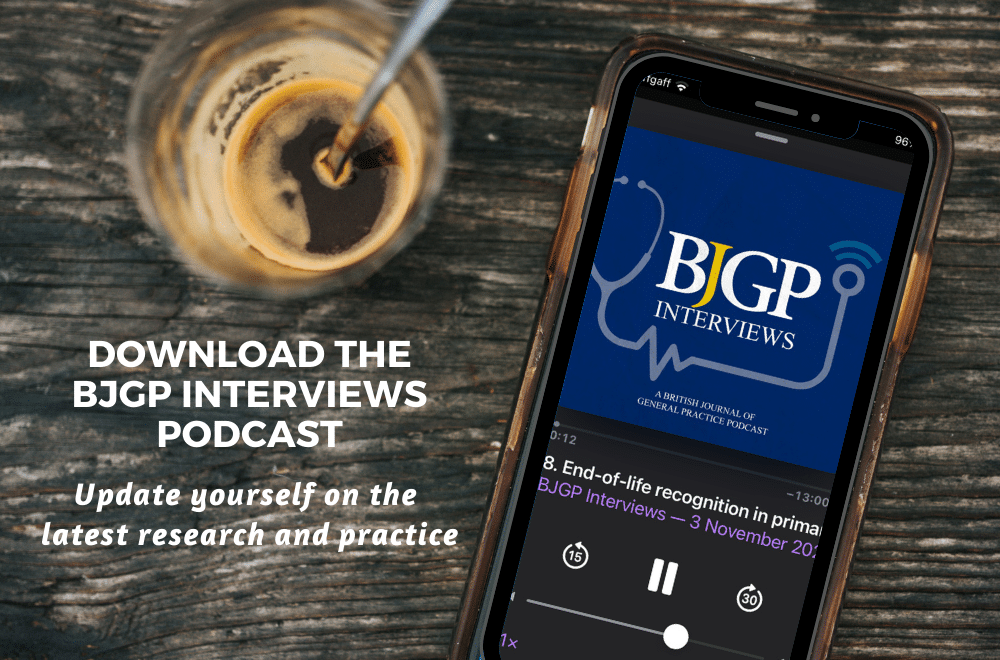 Ahmed Rashid is an academic clinical fellow in general practice at the University of Cambridge. He writes the regular monthly column “Yonder” in the BJGP: a diverse selection of primary care relevant research stories from beyond the mainstream biomedical literature. Twitter: @Dr_A_Rashid
Ahmed Rashid is an academic clinical fellow in general practice at the University of Cambridge. He writes the regular monthly column “Yonder” in the BJGP: a diverse selection of primary care relevant research stories from beyond the mainstream biomedical literature. Twitter: @Dr_A_Rashid
You can download the PDF here at BJGP.org.
Practice nurses
In the UK, much like the rest of the world, a huge proportion of patients with mental health conditions are managed exclusively in primary care, with no specialist psychiatric input. Practice nurses make up a substantial part of the primary care workforce and are increasingly involved in managing long-term conditions. Traditionally, however, mental health has not often been part of their remit and training opportunities have been rare. In a recent study, a primary care mental health expert developed a programme of education designed specifically for practice nurses.1 The ‘train the trainer’ model was used to prepare 24 mental health nurses in North London to deliver the teaching. Both the practice nurses and mental health nurses felt their clinical practice would improve as a result of taking part. As we move to more integrated models of mental healthcare delivery, these collaborations could prove invaluable.
Ehler-Danlos syndrome
An inherited, lifelong connective tissue disorder characterised by joint hypermobility and a number of possible systemic features, Ehlers-Danlos syndrome (EDS) can have a significant impact on many aspects of patients’ lives. Given the complexity of the condition, frequency of chronic pain, and absence of objective physical signs, individuals with EDS are often referred for psychiatric assessment. Researchers from Sweden recently sought to identify levels of anxiety in EDS patients using postal questionnaires.2 The 250 individuals that responded had considerably higher levels of anxiety and depression than a Swedish general population group. They also had significantly lower health-related quality of life. The authors highlight that, although EDS is a lifelong condition with limited treatment options, offering more personalised interventions and acknowledging the psychosocial burden of the condition may help individuals manage their daily lives.
Fitness to drive
Driving allows people to work, socialise, and maintain self-confidence and independence. Stopping driving can have negative health and social effects, although clearly can be essential in certain circumstances such as unstable epilepsy and significant visual impairment. GPs in Ireland, like those in the UK, are expected to assess medical fitness to drive despite receiving little or no training to prepare them to do so.
A group of Irish researchers recently used postal questionnaires to survey 527 GPs about this.3 Although many of them felt confident in their ability to make these assessments, there was ambivalence about who should be primarily responsible to complete them. Some GP responders would consider referring for more specialist opinion if the option were to become available. Many GPs felt their skills in this area were limited and dealing with patient and family pressure and requests for legal clarifications were particularly problematic areas.
Balint Groups
Balint groups
Michael Balint, a London-based psychoanalyst, introduced seminars for GPs in the 1950s that would go on to spread across the world, helping clinicians broaden their perspectives on challenging clinical interactions through case-based presentations and discussions. In a recent review published in Patient Education and Counselling,4 Belgian researchers found that the peer-reviewed literature on Balint groups remains scarce. The research that exists, meanwhile, tends to be diversely reported and methodologically weak, although they found many rich reflective accounts and reports about the benefits they have had for individual clinicians. As studies reported effects (for example, psychosocial self-efficacy, and reduced burnout) only after long-term participation, the authors highlight the importance of organising groups for a sufficient length of time (they suggest 1–1.5 years) to allow for change. As a Balint group enthusiast, I hope this review will prompt further interest and research funding to help convince policymakers of the enormous value of these groups to healthcare professionals, and in particular, GPs.
References
1. Hardy SA, Kingsnorth R (2015) Mental health nurses can increase capability and capacity in primary care by educating practice nurses: an evaluation of an education programme in England. J Psychiatr Ment Health Nurs 22(4):270–277.
2. Berglund B, Pettersson C, Pigg M, Kristiansson P (2015) Self-reported quality of life, anxiety and depression in individuals with Ehlers-Danlos syndrome (EDS): a questionnaire study. BMC Musculoskelet Disord 16(1):89.
3. Kahvedžic A, Mcfadden R, Cummins G, et al. (2015) General practitioner attitudes and practices in medical fitness to drive in Ireland. J Transp Health 2(2):284–288.
4. Van Roy K, Vanheule S, Inslegers R (2015) Research on Balint groups: a literature review. Patient Educ Couns 98(6):685–694.





